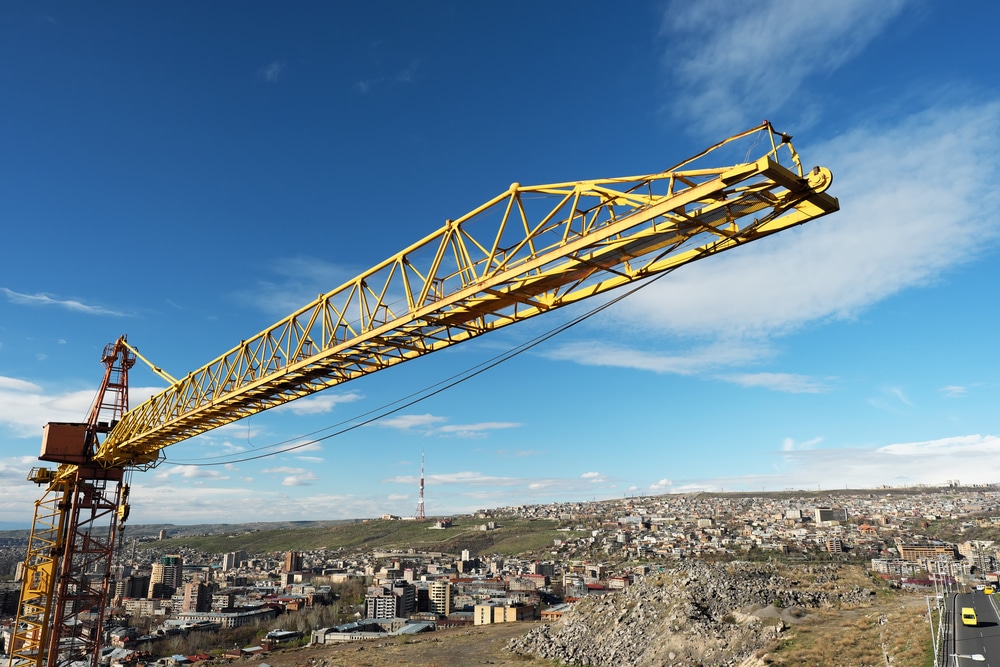Snagging is a common term throughout the construct, but it is essentially slang and has slightly different meanings depending on the circumstances.
The word will be used across a variety of projects, so it's always worth a contractor checking how the phrase is being applied. It can mean different things to different people. Snagging can also be called backlog, which is mostly the American name for it.
It's clear, then, that depending on who someone is working with, a list of obstacles can mean something different for each job.
Here are some of the things that are commonly called hit lists in the construction industry:
- The pre-completion list of pending work is compiled by the contract administrator. This list ensures that the contractor is aware of the work that still needs to be completed before practical completion can be certified.
- A list of minor items, often called minimis, that still need to be finalized after practical completion.
- The list of not-so-minor items that are identified as pending when practical completion is being finalized. This list is included in the practical completion appendix when the certificate is awarded.
- A list of not too minor items that are still outstanding and have not been identified until the delivery of the certificate of practical completion.
As everyone can see, an obstacle is always something considered defective, broken or unfinished. Most problems are cosmetic, but they can be much worse and include manufacturing defects that could cause problems in the near future.
5 Main Categories of Construction Obstacles
Snagging is a crucial process in construction that ensures a new building meets required quality standards and specifications. In general terms, snagging refers to the process of a new owner, whether the client or the end customer, checking a new building for minor flaws that need to be corrected. Often it will be something damaged or broken.
Or it could be something that isn't fitted properly or looks incomplete, like a door with no hinge. Many problems are superficial, but occasionally they can be more serious problems, such as kitchen accessories that are not installed correctly.

What other types of problems can arise? Of course, due to the varied nature of construction projects, it is impossible to list them all. But broadly speaking, they fall into five categories:
1. Forgotten aspects of the project
In many cases, when a project is first completed, there will be something that has been overlooked. Fortunately, this doesn't happen very often and is just something that can be easily resolved by a contractor.
When a construction project is completed, there is a risk that some aspects will be forgotten or overlooked during final checks. This could be due to a miscommunication between the different parties involved in the project or simply human error. The consequences of forgetting an aspect of the project can range from minor inconveniences to major safety risks.
For example, if a contractor forgets to install a safety handrail on a staircase, this could pose a significant risk to the safety of building occupants. Likewise, forgetting to install a ventilation system in a kitchen can lead to poor air quality and potentially impact the health of those using the space.
2. Problems that may take a while to emerge
A second category are problems that may not arise immediately, but may be due to new materials taking too long to be installed. These problems can turn out to be things like cracks in the plaster.
Some construction problems may not become apparent immediately after the project is completed, but may develop over time. These problems may be due to new materials used in the construction process that need time to settle or adjust to their environment. For example, newly laid concrete may take several weeks or even months to fully cure and may develop cracks or other problems during that time.
Other examples of problems that may take time to emerge include problems with the building's foundation, which may shift or settle over time, causing cracks in the walls or floor. Problems with the building's HVAC or plumbing systems may also take some time to become apparent, with leaks or other problems developing slowly over time.
Find it here: Pull planning in construction – guide 101
3. Poor Craftsmanship
A third situation may be poor workmanship, which is generally considered the most common definition of an obstacle. This could occur for a number of reasons: either the workers on the job simply aren't up to par, or perhaps the project plans weren't followed. Or it can often result from rushing work to save time and money. These could be things like doors and windows that haven't been painted around all the edges or a heating system that hasn't been flushed.
Poor craftsmanship is a common problem in construction projects that can lead to a number of problems. This type of obstacle occurs when workers do not perform their tasks to the required standards, resulting in problems that need to be corrected. Poor workmanship can occur due to lack of skills or experience on the part of workers, failure to follow project plans, or rushing work to save time and money.
Examples of poor workmanship that can be identified during locking include doors and windows that are not painted around all edges, leading to the risk of rot or other damage. Poorly installed or maintained heating systems can also be a common problem, with problems such as inadequate heat production or inefficient operation leading to discomfort and increased energy costs.
4. Design and materials issues
A fourth reason may be design-related, where the building was designed incorrectly or the wrong materials were used. Either way, there is a direct impact on the process and non-conformity will arise.
Design and materials issues are another common cause of problems in construction projects. This type of blockage occurs when there are problems in the building's design or materials, which can impact the construction process and result in non-conformities.
Design problems can occur when the building is designed incorrectly or the design does not take into account all necessary factors, such as the building's location, intended use, and local building codes. For example, the layout of the building may not be fit for purpose, leading to problems such as inadequate space, poor lighting or inadequate ventilation. Additionally, design problems can arise when the design team does not consider factors such as accessibility, safety, and environmental impact.
Material issues can also contribute to crashes, as using incorrect or low-quality materials can cause problems during construction or after completion. For example, using substandard or unsuitable materials can lead to structural problems, such as weak foundations or inadequate support, or moisture problems, such as leaks or damp.
5. Latent defects
Last but not least, latent defects. These are issues that only become apparent after a significant period of time and can be caused by any of the issues mentioned above.
Latent defects are a common cause of problems in construction projects and are often the most difficult to detect and resolve. These are problems that only become apparent after a significant period of time and can be caused by any of the issues mentioned above.
Latent defects can take many forms and can include issues such as structural problems, water damage, or electrical failures. These issues may not become apparent until months or even years after construction is complete, and resolving them can be costly and time-consuming.
What is the problem in construction?
Every item that makes it to the hit list must be carefully documented in meticulous detail, and all of this information needs to be communicated to everyone involved. This communication must always be in writing so that everyone has a copy and so that no information is left out or forgotten. It is also recommended that photographs be taken so that the evidence is also visually documented.
Important information that should be included in the problem list documentation is the item number, the person responsible for the stuck item, where the stuck item is located, the type of problem, the details of the problem, the date of the problem, and who it is. responsible for repairing the item. The status of problem items should also be listed, with one pending and eight completed.
Clients and potential homeowners will make their list of obstacles, but the contractor should make his own list of obstacles as the work progresses to avoid serious problems in the future. As each stage of work is completed, problems must be recorded and corrected as quickly as possible so that they are kept under control.

If you are the main contractor on a job, it is important to maintain a hurdle list with your subcontractors to ensure there is no ambiguity about the quality of work required. In this regard, it makes sense for the main contractor to retain a certain amount of a subcontractor's fees until the work is completed to a satisfactory standard.
Architects often also feed a list of obstacles to ensure that what is being built aligns with the drawings. It is the architect's responsibility to highlight anything that was not built to the correct specifications.
When it comes to the finished product, a new owner can afford to have complicated research performed. A decent inspector will check all visible aspects of the finished building, which will include both the interior and exterior of the building.
Typically, a buyer is advised to do this before exchanging contracts with a developer. Although some developers do not allow a complicated search to be completed until completion occurs.
Builders can refuse to offer access to a property before it is completed as they legally still own the land. For a homebuyer, things can get more complicated after they move in, as a construction company may argue that any damage has been done since the customer moved in. Obviously, from a contractor's perspective, it is easier to resolve any issues in an empty property.
What is the next?
Once a problematic report like this is made, it will typically be sent back to the buyer within two business days. A survey of this type normally costs around £300 plus VAT.
In fact, a home buyer has two years from the date of moving into the property to report any defects, including cosmetic ones. Builders are legally obliged to resolve any issues in accordance with a warranty given to the buyer on a property, which can last up to 10 years.
If a new owner does not feel the builder has responded satisfactorily, they can complain to the National House Building Council (NHBC) or their warranty provider. Other options available include making a complaint about the warranty provider to the Financial Ombudsman Service. Or they can resort to the Construction Companies Consumer Code, which has a dispute resolution service.
Of course, they could also follow a legal route, but it is clear that this could be a costly option with an uncertain outcome. In very extreme circumstances, dissatisfied clients have displayed banners in their homes, with messages such as “Don’t buy a house here before talking to me”.

Hopefully, for everyone involved, there will be few instances where it will be necessary to resort to this type of tactic. In fact, very few new home buyers make their complaints public, which may be because they don't want to ruin a home that they will undoubtedly want to sell in the future.
But it illustrates why obstacle lists are so important and why any problems are resolved as quickly as possible to avoid possible unwanted actions in the future. With the power of social media today, one wrong move can create a lot of bad PR for everyone involved in a project.
70 Questions to Include on a Hurdle List
Below you can find 50 questions that can be part of a hurdle list, as outlined by SucceedwithContractors.com. You can find and download the full list here. The questions have been divided based on the item category they belong to:
Ceilings
- Is there any drywall tape joint? (check with the lights on and in natural light).
- Are the holes for lighting and ventilation being drilled correctly?
- Can you spot any cracks in the ceiling? Don't forget the corners of the skylight.
- Were the skylights properly sealed?
- Can you access the attic? Is it insulated correctly?
- Are smoke detectors installed and working?
Walls
- Are there tape joints that have not been properly sanded and painted?
- Can you trace any cracks in the door and/or window? Examine the corners as well.
- Can you spot any screw heads popping out of the plasterboard?
- Are there any nail heads blown off the wood frame?
- Check that the painting is complete.
- Can you see any marks, gouges and/or crushed corners?
- Are there any cracked wall coverings?
Doors and windows
- Can you identify dents, deformations or scratches on the frames?
- Can doors be opened and closed effortlessly?
- Do self-closing doors lock as they should?
- Make sure all exterior doors are weatherstripped.
- Have all external ports been scanned?
- Check that the doors can lock and close properly.
- Are the hinges screwed in correctly?
- Is the door sill placed and sealed correctly to prevent water ingress?
- Are the wall and door frame joined correctly?
- Do the windows open, close and lock smoothly?
- Have all door jambs been placed correctly?
- Is there any damage to the windows? Can you detect any signs of moisture between them?
- Is there adequate air movement under the doors?
Cabinets
- Are there any screw ends exposed inside or on the back of your cases?
- Do the closet doors open and close as they should?
- Inspect the screws on the cabinet hinges. Are they placed correctly?
- Inspect the molding. Is it installed correctly? Check to see if it is nailed or glued.
- Are the nearby rods installed correctly? Inspect its quality.
Accountants
- Inspect that the sink is properly sealed to the countertop.
- Can you find any gaps in the corners of the countertop?
- Check that the backsplash is closed properly.
Floors
- Can you notice any scraps on the carpet?
- Check the floor transition. Is everything placed correctly?
- Are mortar joints the same size?
- Is the floor mortar sealed correctly?
- Are the tiles in good condition? Check for any damage (e.g. cracks).
- Check whether the base of the wall is fixed as it should be.
- Are there any cracks between the base and the wall? Check everything between the base and the floor.
- Can you see any damage to the floor as a result of the works?
- Inspect whether transition strips can be visible in areas where different flooring types are found.
Mechanic
- Check that the exhaust fans work correctly.
- Check that the microwave exhaust fan is installed correctly.
- Do registers and diffusers work as they should?
- Can you detect any problems with the installation of the thermostat(s)?
- Inspect that the furnace filters are clean and in good condition.
- Are the ducts properly insulated and sealed? Check if the contractor carried out the cleaning after the work was completed?
- Can you detect any noise, noise or vibration when the AC and furnace are running?
- Do the devices work correctly?
- Can the extractor fan be used?
Plumbing
- Is the dryer vent working?
- Inspect whether the plumbing fixtures are destroyed and sealed as they should be.
- Is the garbage disposal ready for use? If there is one.
- Examine the shutoff valves. Can you detect any problems and are they installed in all places where there is a water connection (e.g. bathroom, kitchen)?
- Make sure the plumbing in the walls can be easily reached.
- Inspect that the taps work well.
- Can you notice any problems with the toilet flushing?
- Does the water heater work?
- Are traps and backflow prevention devices installed in the drain?
Electric
- Inspect that all telephone jacks work.
- Check that the cover plates are installed.
- Is it possible to install ceiling fans in the future?
- Can you locate a wall switch for ceiling fans?
- Were the circuits labeled correctly?
- Make sure your garage door is working properly.
- Are cable outlets installed in the different rooms?
- Is the irrigation clock working perfectly?
- Where can the circuit breaker panel be found?
Final thoughts on construction obstacles
The importance of a smooth locking process in construction is colossal, regardless of the type of project. When preparing or working on a to-do list, you should always keep an eye on the future.
Simply put, you want to establish a simple, standardized process that can be replicated on future projects. This can be a great investment for both the present and future development of your organization.
The better you are at detecting and resolving nonconformities, the easier it will be to stay on top of your budget and 3-6 week planning.
Of course, some obstacles are worth more than others. Not all nonconformities impact planning, but some do and you should be able to digitally update and monitor your plan.
So you can set up and continually optimize an intuitive project monitoring and inspection process and bring your organization one step closer to success.

